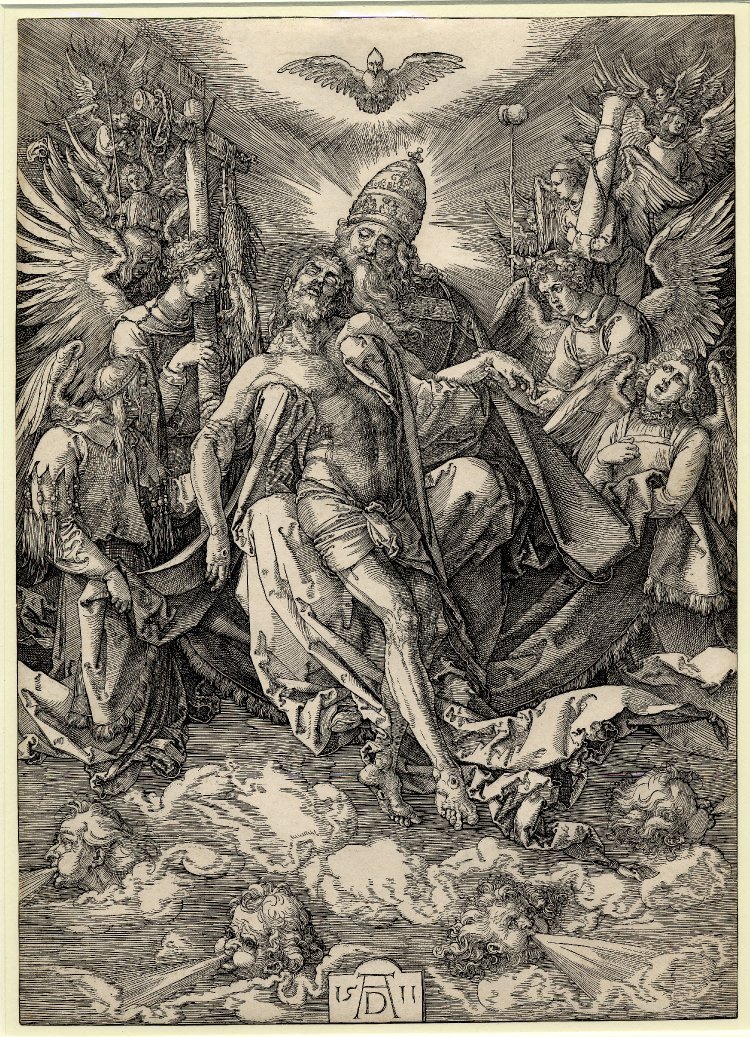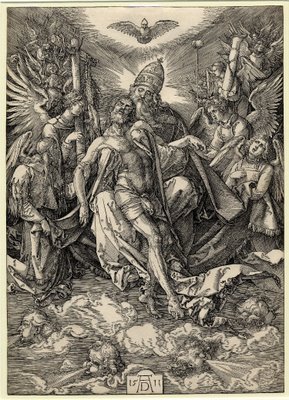
Albrecht Dürer (b. 1471, Nürnberg, d. 1528, Nürnberg)
The Holy Trinity 1511
Woodcut print on paper made by Albrecht Dürer
399 millimetres x: 285 millimetres
The British Museum, London
The Holy Trinity, with the dead Christ being supported by God the Father in Heaven, crowned by the Holy Spirit, surrounded by angels holding the instruments of the passion; underneath the four winds blowing
The British Museum Catalogue entry for this piece states:
“’This … represent the pinnacle of Dürer’s achievement in the woodcut technique. In no other woodcut does he achieve such a subtle representation of shape and depth through using a system of parallel lines, cross hatching and dashes of varying degrees of density. Nor in any other woodcut does he use the white areas of the paper to heighten parts of his composition with such dramatic effect.
A massive painted copy of this print was used as the basis for the temporary decoration designed by Karl-Friedrich Schinkel for the Dürer festivities in Berlin in 1828 (see U. Kuhlemann, pp. 39-60). It was designed in the shape of an altarpiece, with the Holy Trinity in a tympanum above, and a sculptured effigy of Dürer with personifications of the arts below (see Bialostocki pp. 122ff.)’”
Dürer’s religious woodcuts established iconographic models would be widely disseminated throughout Europe and America over the centuries to come































